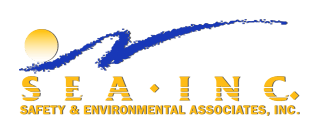EPA Reporting Calendar
EPA’s Reporting

Environmental Preparation and Reporting can be very time-consuming, frustrating, and confusing, especially with ever-changing regulations and agency requirements.
Contact Us Today
Applications, Reports, and Calculations are provided to your company in an easy-to-use format complete with an executive summary and documentation.
Regulatory agencies have complemented SEA's reports for completeness and clarity, key ingredients for an Environmental Document that is usable and defensible year to year. Let SEA help you with these reports.

f you think PFAS regulation is someone else’s problem, think again. The regulatory environment around per- and polyfluoroalkyl substances is shifting rapidly, and safety, environmental, and operations teams are squarely in the crosshairs. Rather than scrambling when the deadlines arrive, your best strategy is to act early.

Halloween might be the season for ghost stories and haunted houses, but for safety and environmental professionals, the real nightmares happen at work. From unseen hazards to data disasters, these frights are all too real. At SEA, we help EHS managers conquer their fears — and their risks — with smart, proactive solutions that turn horror stories into success stories.

Every year, OSHA releases its list of the most frequently cited workplace safety standards. While the names change little from year to year, the numbers tell a story: employers continue to struggle with the same hazards—falls, hazardous chemicals, and machine safety. Understanding these violations is the first step in preventing costly citations and protecting workers.
